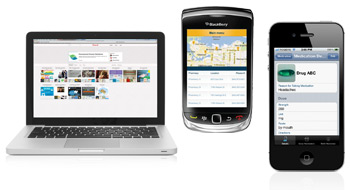
How actively do you promote your benefits plan? Do you fire off emails reminding employees to get their annual dental check-up? Post warnings when claim deadlines are approaching? Tweet about the benefits of your massage therapy coverage?

Plan sponsors have had to make some tough decisions about their pension and benefit plans in recent years. As a result, many of them have invested considerable time and effort figuring out how best to communicate bad news to members. But they haven’t always given the same consideration to communicating good news—and missed a valuable opportunity.

Of the seven billion people on this planet, two billion are connected to the Internet, six billion use mobile technology, and one billion have smartphones. From these statistics, it’s hard to imagine a world where mobile technology won’t be a part of the way providers and plan sponsors communicate and connect with their members.

AFBS hits the mark with its social media policy

By the end of 2013, the number of mobile-connected devices will exceed the number of people on earth, and by 2017, there will be nearly 1.4 mobile devices per capita. If these stats—taken from Cisco’s data traffic projections—are uninspiring, consider the bottom line: if you don’t get in the game, someone else will.
How group insurers prefer to communicate with employees, clients and plan members

Sixty-three percent of DC plan sponsors in the United States are using social media to provide a regular source of information to their members, according to Cogent Research’s Retirement Planscape 2013 study.

Canada’s pension plan sponsors are focusing on their communications with members, particularly about retirement income adequacy, according to a survey.

Pension litigation has been on the rise for many years. A recent decision of the Nova Scotia Supreme Court provides an important reminder to employers and pension plan administrators about the costs and burdens associated with e-mail communications in the context of such litigation.

It’s a constant question for employers: how do you attract the best and brightest people to your organization—and then hang on to them? Some forward-thinking companies, like Ceridian Canada, have realized that, rather than guessing what employees need, it's better simply to ask.